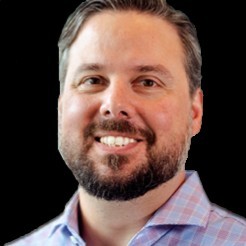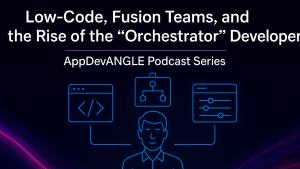ABSTRACT: Mainframes continue to be a critical component of enterprise data strategies, evolving to meet the demands of modern data environments. This article explores the modernization of mainframes, their significance for real-time analytics, and their integration with AI and ML applications. It highlights the sustainability advantages of mainframes, their robust security and governance features, and their strategic role in future data infrastructures. By embracing modernization without disruption, businesses can leverage the scalability, reliability, and security of mainframes while integrating them with cloud-native technologies and modern data platforms. The future of mainframes is bright, offering a path to innovation and growth for organizations.
Mainframes have long been the backbone of critical applications in industries such as finance, healthcare, and insurance. Despite the rise of cloud computing and modern application development practices, mainframes continue to play a vital role in the data infrastructure of many organizations. In a recent episode of theCUBE AnalystANGLE, Rob Strechay, Managing Director of theCUBE Research, and Michael Curry, President of Data Modernization at Rocket Software, delved into the evolving landscape of mainframes.
The Evolution of Mainframe Modernization
Mainframe modernization is a critical focus for many organizations looking to leverage their existing infrastructure while adopting new technologies. Mainframes, historically known for their robustness and reliability, are now being integrated with modern data platforms and cloud environments. Many organizations are moving towards real-time analytics, necessitating the integration of mainframe data with modern analytics platforms.
This modernization effort involves creating data products that bridge the gap between traditional mainframe environments and contemporary data lakes and lake houses. By translating mainframe data into modern formats and maintaining metadata, organizations can seamlessly integrate this data into their broader data strategies.
This modernization is often achieved by bringing cloud-native technologies and techniques for application development close to or onto the mainframe environment.
Mainframes and Analytics: A Crucial Partnership
Analytics is a key driver for modernizing mainframe data. Many organizations rely on mainframes for core transactional systems that generate vast amounts of valuable data. However, a significant portion of this data remains underutilized. According to a Rocket Software survey, less than 30% of companies with mainframes fully leverage their data for analytics.
Real-time analytics requires access to the latest transactional data, much of which resides on mainframes. By modernizing these systems and integrating them with real-time analytics platforms, organizations can unlock the full potential of their data. This integration enables businesses to derive actionable insights, improve decision-making, and enhance customer experiences.
Mainframes and AI: Bridging the Gap
Artificial Intelligence (AI) and Machine Learning (ML) applications are rapidly transforming various industries. Mainframes, with their vast stores of transactional data, are a goldmine for AI and ML applications. However, integrating mainframe data with AI platforms presents unique challenges.
Organizations must focus on creating data products that can be consumed by AI and ML applications without compromising security and governance. By keeping mainframe data within its secure environment and applying AI algorithms, businesses can harness the power of AI while maintaining data integrity and security. This can service many of the most popular Gen AI use cases, such as customer support, by bringing valuable data to a Customer 360 data application. This can be done across industries, with humans in the loop or direct to customers.
Sustainability: Mainframes as a Green Option
Sustainability is an increasingly important consideration for businesses. While cloud computing offers scalability and flexibility, mainframes are emerging as a green option due to their compact energy profiles and longevity. Mainframes can be upgraded and retrofitted, reducing the need for frequent replacements and minimizing electronic waste, playing a role in the circular economy.
Organizations recognize mainframes’ sustainability benefits, especially for high-performance, high-transaction applications. Businesses can achieve sustainability goals by leveraging mainframes for these critical workloads while maintaining operational efficiency.
Security and Governance: The Mainframe Advantage
Security and governance are paramount in today’s data-driven world. Mainframes have long been known for their robust security features. As organizations modernize their data infrastructure, maintaining these security standards is crucial. Moving mainframe data to the cloud or other platforms can introduce security risks and complicate governance.
The importance of retaining the security characteristics of mainframe data while integrating it with modern platforms is critical. This approach ensures that data remains secure and compliant with regulations such as GDPR, HIPAA, and CCPA. Organizations can protect sensitive data and avoid costly breaches and fines by implementing comprehensive security and governance measures that span not just a singular Lakehouse, but the entire data estate.
The Future of Mainframes: A Strategic Asset
Despite predictions of their demise, mainframes remain a strategic asset for many organizations. They offer unparalleled scalability, reliability, and security for critical applications. As businesses modernize, mainframes will play a crucial role in their data strategies.
The future of mainframes lies in their integration with cloud-native technologies and modern data platforms. Organizations can leverage the best of both worlds by creating seamless bridges between mainframes and contemporary environments. This modernization without disruption approach ensures that mainframes remain vital to the data infrastructure, supporting innovation and growth.
Our Perspective
Mainframes are far from obsolete; they are evolving to meet the demands of modern data environments and becoming attractive places for cloud-native applications. We see that through strategic modernization, integration with analytics and AI platforms, and a focus on sustainability, security, and governance, mainframes will continue to be a cornerstone of enterprise data strategies. We see the future of mainframes as bright, offering a path forward for organizations to innovate while leveraging their heritage investments.



